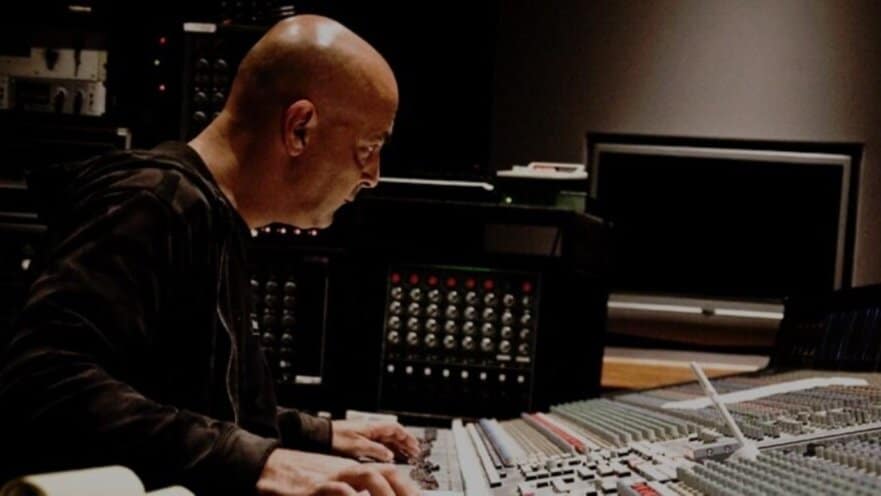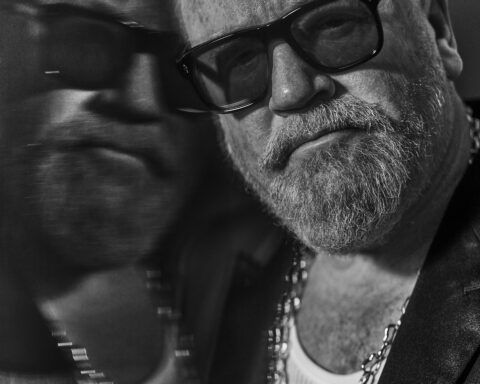Toby Wright is one of the world’s most successful heavy metal and rock producers, having worked with bands including Metallica, Korn and Alice in Chains. But after a car accident 15 years ago left him with nerve damage, the Grammy Award winner used his musical passion and skills to heal himself using the then little-known technique of sound healing, a far cry from the aggressive rock he’d made throughout his music career.
Now Toby, alongside his music executive business partner Jay Sakowski, is sharing his knowledge through their company Taummhoms, an online sound therapy portal designed to help us heal and achieve better, and longer, REM sleep. In the crowded world of wellness subscriptions, this is a sound therapy service for audiophiles, streaming huge WAV files to take advantage of the entire range of frequencies carefully chosen by Toby and his team to repair our bodies.
Here Toby discusses the origin of the company, its philosophy, and why heavy metal and binaural beats have more in common than we might expect.
Start by telling me a little about your record producing career?
Well I started out at college, went to school at NYU, then got a job at Electric Lady Studios in New York. First as an intern, then an assistant. Then I headed to Los Angeles and helped build four or five music studios. I’ve got a technical background, and was in the maintenance department fixing gear, and then got into assistant engineering, engineering and then producing by being in the right place at the right time. We built One on One Studios, where I met Metallica and worked on the ‘And Justice For All’ record, and I did the Village Studio D, which is where we did Fleetwood Mac’s ‘Tusk’.
I’ve won four Grammy Awards for different things, with Metallica and The Wallflowers. I never won with Alice in Chains, although I did five records with them. We considered ourselves as the Susan Lucci of the Grammy Awards, as we got nominated a s*** ton of times and never actually won.
Why and how did you make this leap from producing heavy metal records to focusing on sound healing and launching Taummhoms?
It was born from an accident in a car wreck in 2005. I got hit from behind at about 50 miles-an-hour, a lady was on her cell phone, and her license plate ended up in my backseat. I had major nerve damage to the right side of my body, and I set about trying to heal myself. I went to all the doctors and did what they asked me to do, but everywhere was numb, and I was just so frustrated. So I went to the internet, which was pretty new in 2005, and I looked at hundreds of websites and 1000s of pages and did a lot of research on this thing that I found called sound healing. I had no idea what it was. I had a studio in Woodland Hills at the time, and I took a bunch of research, went to the studio and made a CD of a bunch of different frequencies that my research said might be able to help me.
When I first listened to it, it was horrible. But then I decided to properly mix it, and it started working. I took it home and put it on my CD player, and I started to sleep really well, and a ton of good things started happening. So I just kept playing it and playing it. Now I’m able to meditate longer, focus better, and hold my breath for longer.

Toby (L) and fellow producer Jeff Hendrickson work on the BulletBoys record in 1986
What sets you apart from the other similar relaxation sound tools on the market? And tell us a little more about the science behind it.
What sets us apart is streaming the WAV files, which are basically high definition sound. Most people listen to what they call mp3, a very tiny file where they take off the top frequencies and the bottom frequencies and hope that everything in between represents the song. And they’re able to stream that and store that for little to no money because it doesn’t take up very much room. But when we tested out Taummhoms with an mp3 it chopped off the lower end frequencies that are very important to making this work. But our WAV files are an uncompressed audio file that is full bandwidth. So for the layman out there, it’s just a massive, big file that has all of the stuff that you need to heal.
Everything in this universe that we know of is made up of a vibrational frequency of some kind. So what I’ve done is taken specific frequencies that have been known over time to help the human body do certain things and combined them. And then also mixed that so it sounds pleasing. We have the natural sound on our website, that’s just the tonality by itself, and that’s the most powerful. And we also put some nature sounds with it, because it might be a little bit too much for the average person without them, if they’re not used to something like this.
One of the sciences that I borrow from is called binaural beats. The basic explanation of this is if I put a tonality in one ear, let’s say a frequency of 200 hertz, and I put 205 in your other ear, what your brain is going to hear is three different tonalities, 200, 205 and the five hertz difference between them. The theory is that since your brain wants to sync to your environment at all times, to keep you safe, then it will latch on to this vibrating binaural beat and sync your brain to match whatever the frequency is. I learned in my research that REM sleep comes around three to five hertz, and REM sleep is where you heal and where your body does all of its healing. So we can help you reach this REM sleep faster, easier and stay there longer by using these tonalities.
I love this contrast between the heavy metal you used to produce and these healing sounds. Presumably your ears have taken a bit of a battering over the years?
Oh sure, and my body has too! I put myself through the wringer several hundred times. But I love all kinds of music, to me there’s only two types of music: good and bad. When people listen to music on the radio they sometimes say, ‘This song sucks.’ But that’s so harsh and judgemental. They miss out on the creativity that humans went into to produce that record. And part of the Taummhoms experience is the emotions that come with it. We have sounds to help you refresh, restore and revive. And I’ve even taken some of the stuff I’ve learned from Taummhoms and put it into the records I’ve produced, using tonalalities to invoke a certain feeling depending on what the song is talking about.
Learn more at the Taummhoms site.









Who knew heavy metal music would some day be used as sound therapy?